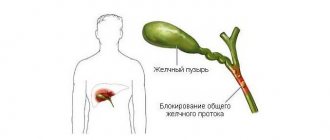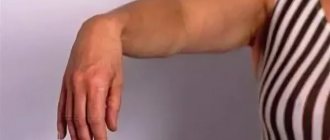Many people believe that obsessive-compulsive disorder only manifests itself in frequent hand washing or double-checking the closed front door. Moreover, in the minds of many, this disorder is idealized and romanticized, and has a certain mystique that confirms the pedantry, responsibility and accuracy of a person with OCD. However, this is a misconception. Obsessive-compulsive syndrome is much broader than just the thought of not turning off the iron; it is a condition that worsens the quality of life, causes discomfort to oneself and others, and also has the most tragic consequences.
What is obsessive-compulsive disorder, how to live with it and is it possible to get rid of it?
OCD is a disorder in which a person is constantly visited by intrusive negative thoughts. For example, that he could kill someone, or that he didn’t turn off the iron and his apartment would burn down, or that he could get infected from germs and die. Such thoughts are called obsessions.
Thoughts fall into two categories: aggressive and anxious. Aggressive thoughts include those in which a person is afraid of hurting or harming another person. For example, he worries that he will hit a child, hit his boss, or push someone onto the tracks.
Anxious - thoughts of danger. For example, fear of getting infected, fear that the house will burn down, war will happen, or the end of the world will come.
The thought is necessarily unpleasant, negative, terrifying. She comes to consciousness out of nowhere, suddenly and illogically. In fact, most people have these thoughts. And that's absolutely normal. The difference between an ordinary person and an OCD person is that the former does not separate these thoughts from the general flow. The thought came, the man thought it over and said goodbye to it. A person with OCD, in turn, focuses on thoughts. She gives him no peace. An emotion appears, an anxiety that needs to be calmed. And then the person tries in various ways to cope with these obsessive unpleasant thoughts. Certain actions and compulsions begin to help him in this.
For example, washing your hands frequently and thoroughly so as not to get sick, double-checking the closure of the door so as not to be robbed, avoiding sharp objects so as not to harm yourself.
It is the incorrect perception of obsessive thoughts that contributes to the development of obsessive-compulsive syndrome.
Manifestations of obsessions
Obsessions are expressed in various obsessive forms.
Actually, obsessive thoughts are single words, phrases, sentences, songs, poetic expressions of a negative nature that irritate and interfere with the patient.
- Impulses . A strong desire to commit an indecent act: while sitting at a meeting, an irresistible urge to yell at employees arises. Arriving at a restaurant, you suddenly want to hit the waiter. The urge to harm loved ones is considered common. There is a fear that the impulse will come true. In reality, persistent desires remain unfulfilled.
- Images . Unflattering scenes appear intrusively in a vivid form before a person’s eyes without his desire. Example: a man systematically has a picture of his friend being hit by a car popping up before his eyes.
- Doubts . They pop up against the background of an already accomplished event: did you lock the door, did you turn off the iron. A man, having worked his last working day, goes straight from work to the station. Here he will take the train and go to the sanatorium, where he will spend his vacation. On the way to the station, he begins to be tormented by doubts about whether he set the office alarm. I arrived at the station just as the train was leaving and had no opportunity to return and check the office. On the way to the sanatorium, the poor man already had a chain of tragic events: the office is located in a presentable area, in the city center. It has a convenient location, a balcony from which it is easy to get inside. There is a safe in the office. Surely the robbers found out that he was going on vacation, the office would be empty. For professionals, choosing a code for a safe is very simple. In the sanatorium he thinks only about work. Every day he checks the news to see if there are any reports of theft. Calls a colleague to find out how work is going. Exhausted by doubts, he returns from vacation ahead of schedule. On the road, the closer the patient gets to the house, the more anxiety and fear gripped him.
- Aggressive obsessions . Or contrasting thoughts relate to an unreasonable feeling of hatred towards relatives, towards any other person, object. Such antipathy is not supported by anything, it arises out of the blue. Patients do their best to drive away such feelings, understanding their irrationality. Example: the flaring up of negative feelings in a priest towards the saints. Aggressive obsessions are accompanied by a strong emotional outburst. There is a tireless desire to spoil any line with an unpleasant addition, to shout obscene, immoral phrases.
Imagery obsessions are classified as a separate group . These include obsessive thoughts and memories.
Intrusive thoughts are expressed in a long internal monologue on meaningless topics. A long chain of conclusions is born in the head, which does not lead to productive conclusions.
Such thoughts are so stupid that they are called “mental chewing gum”!
Fruitless obsessive reasoning within oneself is comparable to reasoning. The main difference is the patient’s critical attitude to his reasoning during obsessions.
A woman, walking down the street, thinks: who will I meet first among the passers-by, will it be a man or a woman? If a woman, what kind of haircut or long hair? Perhaps the first I will see is a man. Which direction will he go from? Such a series of questions/answers can continue for a long time in the patient’s head. Useless reasoning prevents you from focusing on significant events.
Intrusive memories force a person to systematically return mentally to a specific, already accomplished event that is insignificant or unpleasant.
Signs of OCD
You can suspect obsessive-compulsive syndrome in yourself or your loved ones based on the following signs.
1. Scrolling negative thoughts and images in your head.
For example, the thought that you might hit a child or spit in your boss's face. Or an image where you are doing something out of the ordinary in a public place.
2. The emergence of irrational anxiety.
You are suddenly overwhelmed by a feeling of fear and anxiety, for no real reason. You feel in danger.
3. Fear of germs.
4. Tendency to constantly double-check everything.
You remember that you already closed the door, but you will feel safer if you double-check it again.
5. Hoarding.
It is difficult for you to part with objects and things that, in an amicable way, should long ago be sent to a landfill. You see the necessity and meaning of their presence next to you.
6. Obsessive counting.
Before an important task, you need to make an account. For example, count to 10 before speaking to a person in a public place.
7. Unhealthy pedantry.
Love for cleanliness and order is commendable. But when you run away from problems by cleaning or feel discomfort if you haven’t washed the already clean floors, these are the first signs of OCD.
Causes of obsessive-compulsive disorder
Many people are concerned about the risk of “contagion” of OCD and the reasons for its appearance. Scientists have conducted studies examining factors that influence the development of OCD.
Genetic predisposition. Mutation of a group of genes responsible for the distribution of the hormone serotonin increases the likelihood of developing OCD. Heredity. Children whose parents suffered from OCD are at risk of developing the disorder as well. Autoimmune. Streptoderma, acute tonsillitis, scarlet fever and other infectious diseases suffered at an early age affect the development of OCD. Purchased. This includes any trauma at birth. Strictness and perfectionism of parents. Excessive demands on yourself and children can provoke OCD.
Symptoms
OCD affects men, women and children equally. Race, nationality and other ethnographic characteristics of origin do not matter. OCD can begin at any time, from preschool to adulthood. Doctors distinguish two age ranges when the disease first appears. The first range falls between ages 8 and 12. The second range occurs between the late teenage years and early adulthood.
Scientists still do not know the exact cause of OCD. There is an assumption that everything depends on the structure of the brain and heredity:
- If we talk about the brain, then scientists see the problem in the disruption of communication between the front part of the brain and its deeper structures. Pictures were taken, and when OCD patients took medication, the brain circuits were partially restored and the person felt better.
- If we talk about genes, then they probably play a role in the development of the disorder: a relative suffered from OCD → harmful chromosomes got to the receiver → the receiver is at nine times the risk of developing OCD than an ordinary person. This conclusion was reached by an American research team that published its data in the Archives of General Psychiatry.
Almost nothing is known about the presence of other catalysts for the disease. These could be habitual illnesses and even normal life stresses that can trigger the activity of genes associated with OCD symptoms.
Some statistics on OCD
Obsessive-compulsive personality syndrome, according to statistics from various authors, occurs in 2-3% of people.
The first signs in 30-50% of cases appear in childhood and adolescence. Gender differences have not been established, as well as the influence of social and financial status on the appearance and development of the disorder. However, some authors have found a pattern between educational level and OCD.
The syndrome is more common in people with higher education and those whose work involves intellectual activity. The listed statistics, although they give an idea of the OCD situation in the world, are not accurate due to the fact that most “sick people” do not turn to specialists. But people with obsessive-compulsive disorder can be found in literature and cinema.
What is R&D
research
is a research work. This is a document describing the experiments and research carried out. The information received is comprehensively analyzed. The result of the research work is a report developed according to state standard 7.32.2001. The applied result of the research work is the technical specification (abbreviated as TK).
The developed report usually describes the objectives of the scientific research performed, the status of the scientific problem being solved and the results achieved. A technical specification is written if it is planned to use the results of research work to create samples of designed products.
Obsessive-compulsive disorder in culture
To have a clearer idea of OCD, let’s remember examples from movies.
The film “Day of the Psycho” is dedicated to the exact daily routine, strict rituals, attitude towards others and behavior in society of the main character Adam (played by Marek Kondrat).
In the movie As Good As It Gets, the main character Melvin Adell (played by Jack Nicholson) also suffers from OCD. He often washes his hands, and only in boiling water and with a new product each time, always wears gloves, eats exclusively with his own utensils, is afraid of stepping on a crack in the road, avoids touching strangers, has his own ritual of turning on the light and closing the lock.
Scrubs' character Dr. Kevin Casey (played by Michael J. Fox) has many OCD rituals. He enters the hospital building three times, touches everything in the first patient's room, repeats the "bing" formula, and wipes off any stains that catch his eye.
The film Dirty Love vividly depicts the OCD symptoms of the main character Mark (played by Michael Sheen), due to which he loses his wife, home and job.
In the TV series Girls, the OCD of the main character Hannah Horvath (played by Lena Dunham) manifests itself in constantly counting to eight.
The main character of Detective Monk (played by Tony Shalhoub) brushes his teeth 12 times a day and flosses every 90 minutes.
In the TV series "The Big Bang Theory", the main character Sheldon Lee Cooper (played by Jim Parsons) dictates his own rules and conditions for everyone to be around him due to OCD. He is terrified of germs, does only familiar things with familiar people, sits only in a certain place on a common sofa.
The heroine of the series "Glee" Emma Pillsbury is obsessed with order and cleanliness due to OCD. Just like Monica Geller from Friends.
Diagnosis of obsessive-compulsive disorder
Today, the diagnosis of OCD is based on the International Classification of Diseases, 10th revision (ICD-10).
ICD-10 has the following diagnoses for the disorder we are considering:
OCD. Predominantly intrusive thoughts or ruminations;
OCD. Predominantly compulsive actions;
OCD. Mixed obsessive thoughts and actions;
Other obsessive-compulsive disorders;
Obsessive-compulsive disorder, unspecified.
General criteria for defining the disorder
:
obsessive thoughts and/or actions; they should appear in most cases over a period of at least two weeks; obsessions/compulsions are a source of stress for a person; the thought of implementing an action is unpleasant for a person; thoughts, ideas and impulses must be unpleasantly repetitive; compulsive actions do not necessarily have to correspond to specific thoughts or concerns, but should be aimed at relieving the person of spontaneously arising feelings of tension, anxiety and/or internal discomfort.
Typical symptoms of the disease
The main manifestation of obsessive-phobic neurosis is obsessions. By this term, doctors mean obsessions, doubts, fears, memories, experiences. The patient cannot forget about them, which negatively affects his quality of life.
At the same time, he is critical of himself and understands that he is behaving strangely. Makes attempts to forget about the obsessive thought, but cannot change anything.
Very often, obsessions are accompanied by compulsions. These are movements with which the patient tries to relieve nervous tension. Rocking from side to side, picking off nails, pulling out hair, stepping over road markings, and all kinds of ritual movements are all examples of compulsions.
With obsessive neurosis, the patient becomes slow and inhibited. Overwhelming reckless ideas prevent him from focusing on important things. The disorder can occur in different ways, starting with barely noticeable symptoms and reaching disability and partial loss of ability to work.
If the neurosis is mild, the patient’s friends may not even realize that something is wrong with him. They perceive strange movements and phrases as character traits or banal jokes.
In severe cases, neurotics often refuse to leave the house if they are afraid of dirty air. They cannot handle any objects because they are afraid of germs. Everywhere they see danger. Patients evaluate fictitious ideas as real. It is impossible to convince them otherwise without medical help.
Complications of OCD
Obsessive-compulsive syndrome, in addition to worsening the patient’s quality of life, is also dangerous because it affects the development of other mental disorders. For example, depressive disorders, anxiety disorders, and suicidal thoughts may occur.
This is due to the fact that a person cannot get rid of OCD. There are also frequent cases of abuse of tranquilizers, alcohol, and other psychoactive substances, which, of course, only aggravates the course of the disease.
Depending on the degree of neglect of the disorder, the optimal method and type of treatment is selected. The following techniques can be used:
psychotherapeutic influence; drug therapy; family and social rehabilitation.
How does obsessive-compulsive disorder manifest itself?
Neurotic symptoms require examination and diagnosis by an experienced psychiatrist. If you or your loved ones have the complaints described below, then find the opportunity to see a specialist at the Leto clinic. Do this on time, otherwise the manifestations may turn into a serious pathology, from which you will have to spend significantly more money and time to get rid of it.
The main manifestation of SNS is obsessions.
This is what they call obsessive:
- desires;
- thoughts;
- phobias;
- attraction to something (or someone);
- memories.
The patient tries to get rid of these annoying signs, but he is unable to do it on his own. Obsessions haunt a person, and any attempt to ignore them ends in an increase in the intensity of complaints. The patient's criticism of his own condition is completely preserved.
As a defense mechanism, a sick person develops compulsions. They mean actions by which a neurotic person tries to relieve obsessions, fears, and get away from dominant thoughts. Compulsive actions and movements can manifest themselves in a form hidden from others. And the suffering face looks distracted and slow.
The severity of compulsions can be:
- Mild degree, practically not affecting the quality of life and ability to work. People nearby often do not even suspect that their loved one has a painful problem. Some oddities of behavior are attributed to character traits.
- Severe degree, in which partial or complete loss of socialization and ability to work, up to and including disability, cannot be ruled out. Patients may, due to fear, not leave their homes on the street, stop going to work, for example, for fear of being infected, or fall under the influence of harmful factors.
Dynamic observation allows psychiatrists at our center to identify three main types of obsession:
With a constant level of symptoms. Over the course of months and years, the patient’s painful manifestations are persistent and permanent, without improvement or deterioration in mental health.- With periods of remission. The relative calm is disrupted by temporary exacerbations. Complications occur after illness, against the background of stressful situations, severe psychophysical fatigue, troubles at home and at work.
- With steady progression. Obsessive-compulsive symptoms are gradually getting worse. The patient’s well-being deteriorates, accompanied by changes in character and behavioral disturbances.
Treatment of obsessive-compulsive disorder
In the treatment of OCD disorder, the cognitive-behavioral method of psychotherapy has proven effective. This approach was developed specifically to address OCD symptoms.
It is based on awareness of the disease, recognition of its manifestations and learning to resist them until complete control over the situation is gained. Individual psychotherapy sessions are recommended until the patient begins to distinguish obsessive obsessive thoughts from justified anxious fears. Next, the emphasis is on changing compulsive behavior. After the measures taken, it is much easier to deal with them. Psychotropic drugs, in particular antidepressants and tranquilizers, are widely used to treat severe forms of OCD.
Dr. Shmilovich’s clinic “Alter” employs professionals who have all the necessary knowledge and competencies to help you or your loved ones cope with obsessive-compulsive disorder.
Sign up via the website or by phone
Preventing the return of the disease
It is almost impossible to completely recover from obsessive neurosis, but you can make it mildly expressed - invisible to others and not interfering with the patient’s ability to lead a normal lifestyle. Adequate psychotherapy and competent medication support reduce the symptoms of the disorder.
In some periods, for example, after overwork or stress, the disease may worsen again. But its symptoms will already be smoothed out, and the person will know how to “suppress” them completely.
Remember: if you start treatment for a mental disorder in its early stages, it will not go very far. This means you can live and work normally, and be a happy family man. If you start neurosis, it can even lead to disability. The choice is yours - fight for your health and find happiness or wilt under the pressure of reckless obsessions.
The specialists of the Leto clinic are ready to support you. If you want to be cured, be sure to call 8(969)060-93-93 . There are no hopeless situations. If it seems to you that you are in exactly this situation, it means that it was created by your wild imagination. We will demonstrate the brightness of the world around you and relieve you of annoying obsessions and compulsions.









